
15 Sep Recognizing Indigenous influences on a Sea to Sky Corridor Adventure
While visiting the Sea to Sky Corridor, Travel Blogger Charmed Nomad (https://charmednomad.com/) explored Squamish and Whistler with a lens keen on identifying the rich Indigenous elements woven into each adventure. The following is a rendition of her journey, paired with images captured along the way.
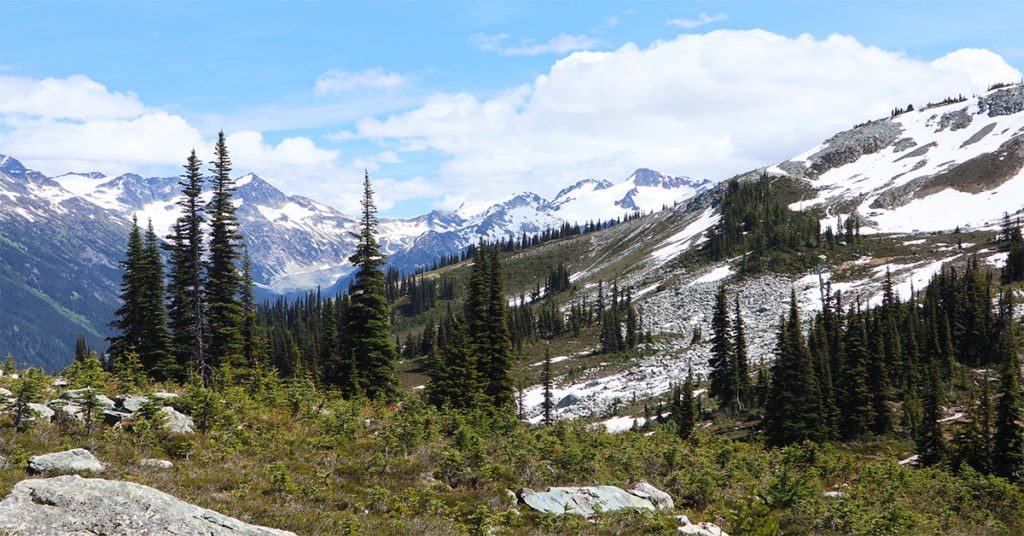
Whistler (Skwikw in Sḵwx̱wú7mesh, Cwitima in Ucwalmicw) is no doubt one of the most beautiful places in the world and although mostly regarded as a first class ski resort, there is an abundance of summer activities to be enjoyed as well, along with a wealth of history.
Located only 120km north of Vancouver and accessed via the iconic Sea to Sky Highway, I have made the journey many times before (being a Vancouverite, yes that’s what they call us here in Vancouver) – In fact it used to be a part of my daily commute for work….how lucky for me!
There are few highways in the world with as much awe-inspiring scenery as the Sea-to-Sky Highway (with the ocean on one side and mountains on the other). Officially known as BC Highway 99, this legendary route from Vancouver to Whistler and beyond is a drive with incredible sights at just about every turn.

This summer on my visit to Whistler, I knew that I wanted to learn more about the First Nations that call Whistler and the Sea to Sky Corridor their ancestral territorial home – The Squamish and Lil’wat First Nations.
One way you can do this is with the Cultural Journey interpretive kiosks dotted all along the highway, which are topped by traditional woven cedar hats. They each recount the area’s history and the presence of the First Nations on their traditional lands.
Make sure to keep your eyes peeled for these Kiosks, and stop to check them out when you spot them (there are 9 in total).
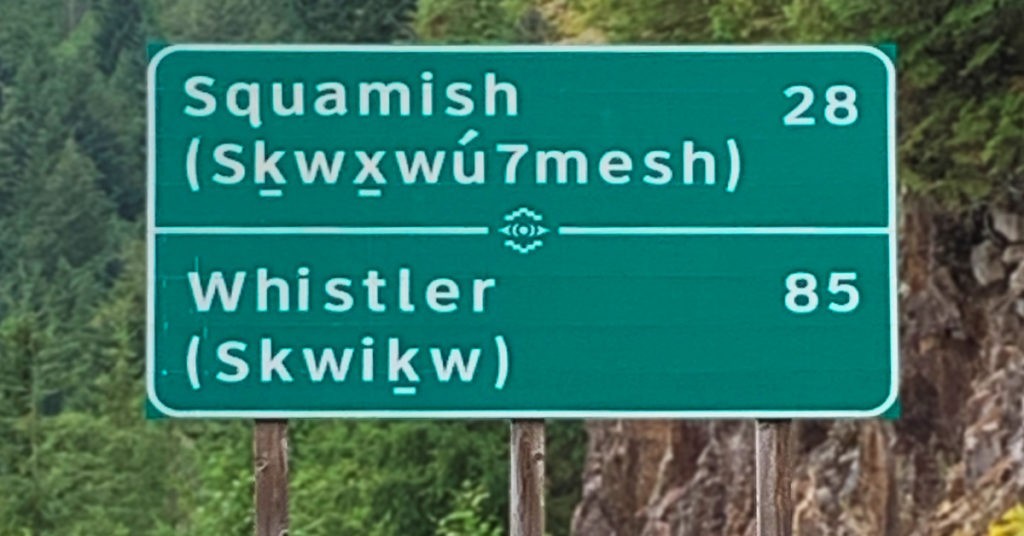
First Nations are one of three Indigenous groups in Canada, with the term ‘Indigenous’ referring to First Nations, Inuit and Métis. Each of the three groups were Canada’s first inhabitants but should not be confused with one another –each have their own history, culture and communities.
Many First Nations communities including the Squamish and Lil’wat Nations were oral societies, passing down their traditions and knowledge to the next generation through songs and tales – in fact The Squamish and Lil’wat First Nations only created their written language in the 1970’s.
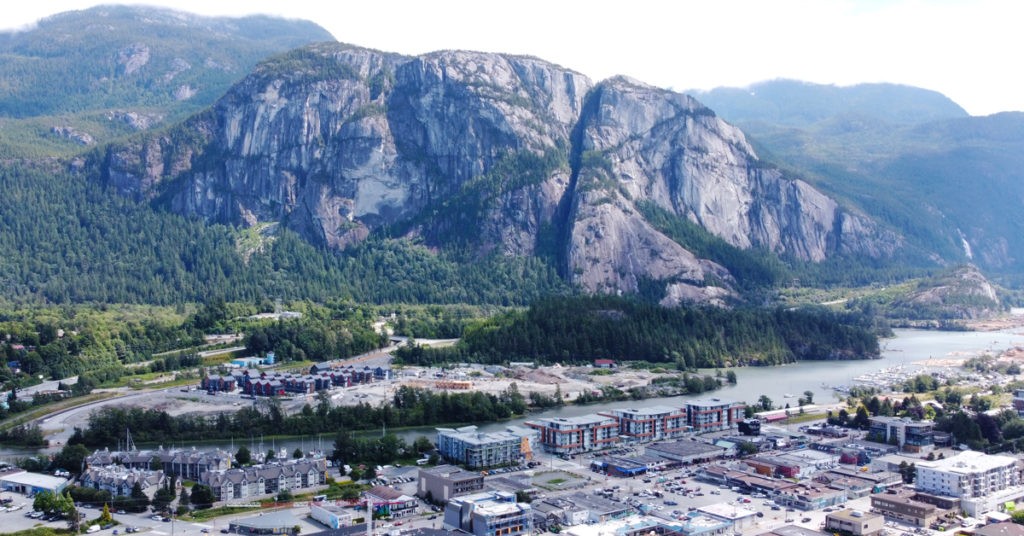
Along my drive up to Whistler, I stopped at the Stawamus Chief (also known as ‘Siy’ám’ Smánit’) which regally dominates over the town of Squamish.
I have climbed it before and it was exhausting but well worth it, when you reach the peak. To say the views from the top are spectacular is really an understatement – however don’t worry, you can now get to those views easier by taking the Sea to Sky Gondola up to the top, with no climbing involved! Up on top are various hiking trails, from easy to difficult along with your pick of bars and restaurants to replenish your strength after you are done. Views and nature, along with an epic suspension bridge and viewing platforms along the way are well worth a visit and not something you will forget anytime soon!

While still in Squamish I also stopped to partake in an afternoon of white water river rafting, with Canadian Outback Rafting. It’s something I tried years ago and have been dying to do again, well I thought this was the perfect place as the scenery just doesn’t get much better than here!
Canada contains 20% of the world’s total fresh water resources which means there are rivers and lakes everywhere. Along with it being the most important building block of life, that same water was also the highway of the past.
The First Nations hold water sacred and their ties to water is best shown with their canoes, which are carved from a single cedar log and steamed to shape. Canoes were essential for travel, transport, hunting, and trade. There are different types of canoes made in various sizes, from a few feet long inland canoes to over 40ft long ocean going canoes.
My ride down the Elaho river was not in a canoe, rather in a rubber dinghy, but it still gives you the perspective of what it is like to go down the rapids and feel the power of the river. Our guides were not only professionals in rafting, but also very knowledgeable in the region’s First Nation history, which was an unexpected bonus for me.
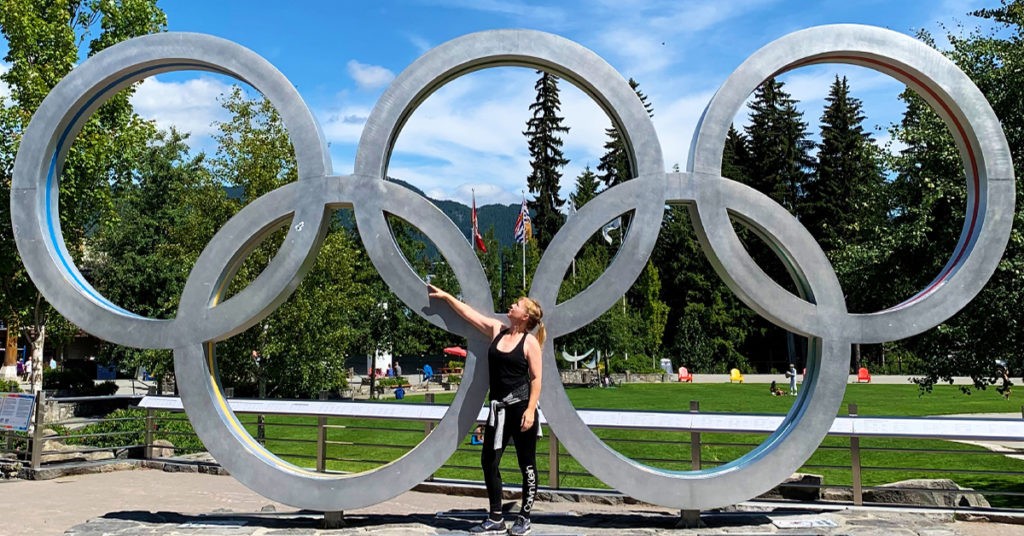
After my rafting adventure, I continued my journey along the Sea-to-Sky Highway, finally reaching my destination of Whistler, a picture perfect location that never fails to take my breath away.
For many years Whistler was just that: a picture perfect location known for its skiing and snowboarding scene, but all of that changed in 2010 with Whistler hosting (along with Vancouver) the Winter Olympic and Paralympic Games, making it the world class destination it is today.
This was not a short journey by any means, in fact it started in the 1960’s with a vision of hosting the 1968 Winter Olympics, which ended up being awarded to Grenoble, France – and it took three more bids and more than 40 years before Whistler successfully won the host bid (learn more by visiting the Whistler Museum).
The Vancouver Organizing Committee, along with the Province of BC, were committed to the meaningful involvement of the region’s Four Host First Nations in hosting a successful 2010 Winter Games, It was an incredible and exciting time, with the spirit and legacy of these games still living on in Whistler today, a decade later.

Located only steps away from the Olympic Rings is The Olympic Lightening Welcome Figure by Sesiyam Ray Natraoro and Bansht Delmar Williams. When looking at this welcome figure you will see, from top to bottom: the moon (representing the creator) sending the lightening snakes to earth to bestow to humankind (at the bottom) with the gifts of knowledge and tools to flourish in our rich and diverse territories. If you are interested in exploring more Indigenous art in Whistler’s public spaces, you can participate in your own self-guided tour.
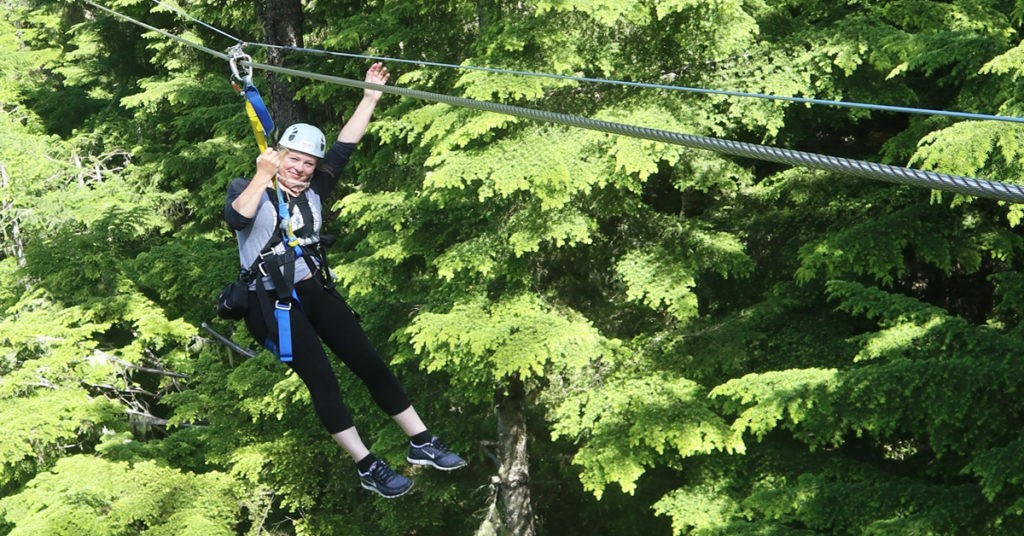
During my time in Whistler I had the opportunity to go on an incredible zip lining adventure with Ziptrek Eco Tours. This year, they have created a new tour called The Falcon Tour, which was specifically designed for the 2020 season. I was lucky enough to be one of the very first to try it out!
Featuring an interactive self-guided forest walk, 3 different ziplines, treetop suspension bridges and sky high viewing platforms with absolutely incredible views, I literally soared like a falcon over the Fitzsimmons Creek between Whistler and Blackcomb Mountains. I learnt on this tour that the Fitzsimmons has a huge significance to the First Nations – as it was for thousands of years the home, fishing, hunting and harvesting ground to the Lil’wat Wolf Clan, today known as Wallace Family.
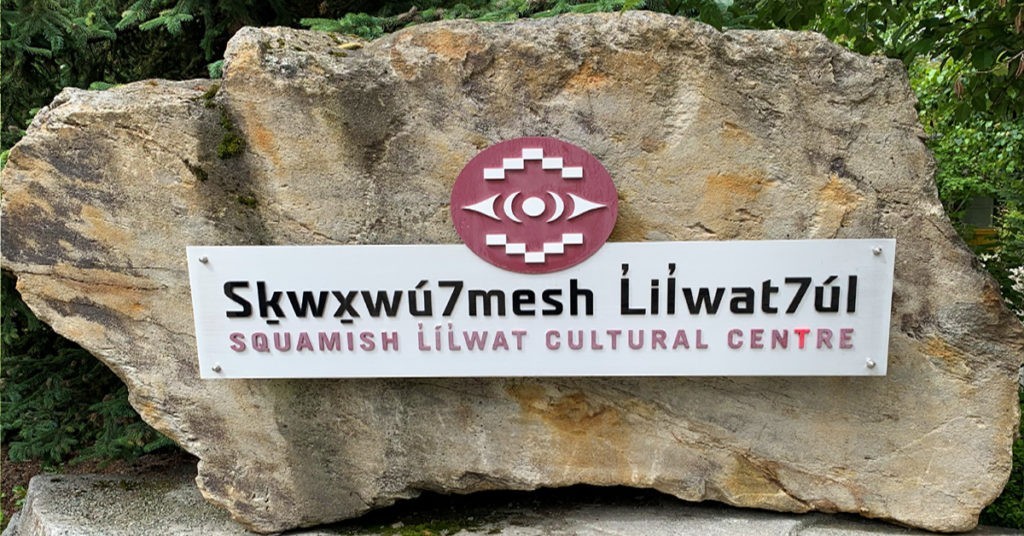
My next adventure took an immersive and cultural twist: no visit to Whistler would be complete without a visit to The Squamish Lil’wat Cultural Centre (SLCC). Way more than a museum, this 30,000 square foot facility educates youth and visitors from around the world about the Squamish and Lil’wat Nations that share this territory.
Coexisting respectfully as neighbours since time immemorial, the SLCC was designed to share their two distinct cultures while inspiring a greater understanding and respect amongst all people. Built in 2008, it is the first joint cultural centre of its kind in Canada.
Upon my arrival, Cultural Ambassadors greeted me warmly with a traditional song and dance. I was then guided through their fully interactive centre, which was more than I could have expected. It is the perfect place to learn about First Nations culture with it’s friendly staff and calm environment. Beyond the regular hours of operations, ,the SLCC hosts a variety of programs and events throughout the year.
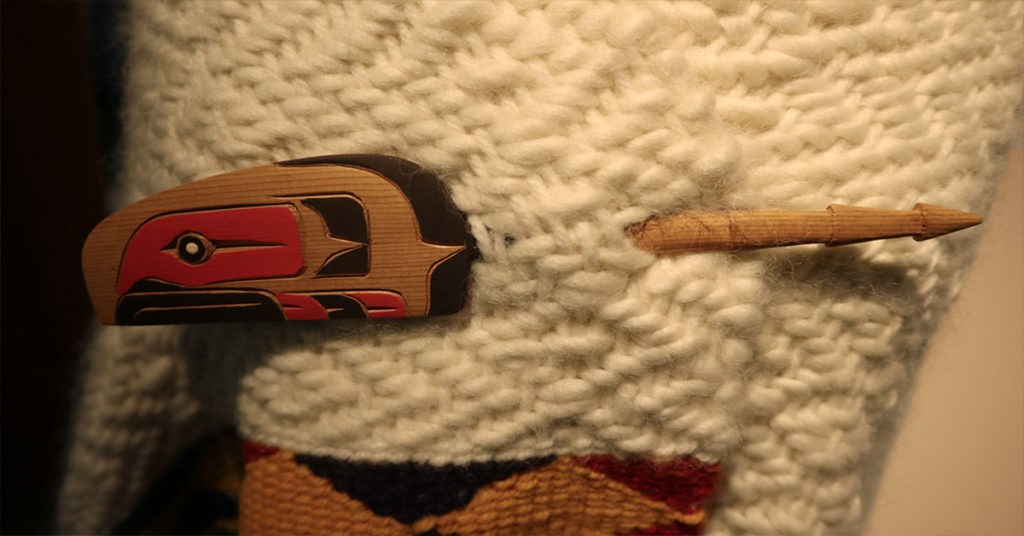
One of the main ways that visitors to Whistler will experience First Nations culture is through their incredibly vibrant art. Historically, First Nations art was regularly used for practical purposes, including in ceremonies and for storytelling.
Beyond the striking Coast Salish and Interior Salish art on display are modern interpretations of traditional housing, woven baskets, and tools used by fishermen and hunters. Temporary exhibits enhanced my visit, such as the regalia (traditional clothing) being worked on and the twenty foot cedar pole carving.
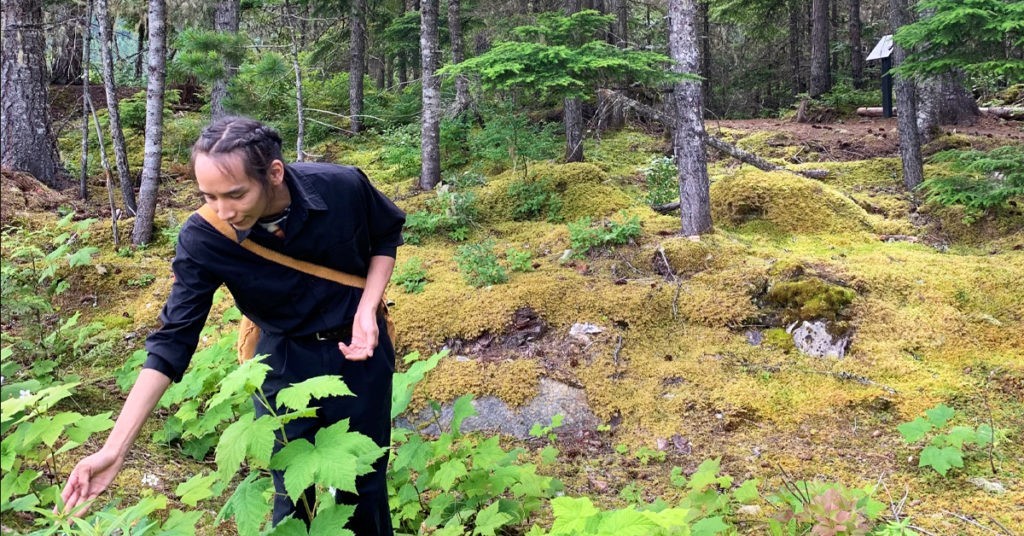
First Nations people have huge respect for the natural world and believe that people should live in harmony with it. They believe that their values and traditions were bestowed as gifts from the Creator and that Elders play an integral role in vocalizing stories and legends which have been passed down from generation to generation.
When planning your visit to SLCC, you should definitely coordinate it with one of their guided tour experiences (included with your admission). For example, I participated in the Guided Forest Walk, where I learnt about local flora and fauna found along the SLCC’s Salish Stroll. My guide, Qawam Redmond Andrews, peppered in stories, myths and legends as well as some traditional songs throughout our tour. I tasted delicious berries that I had never even heard of before, learnt all about the cedar tree and its many uses – and even which plant leaf makes a natural bandage!
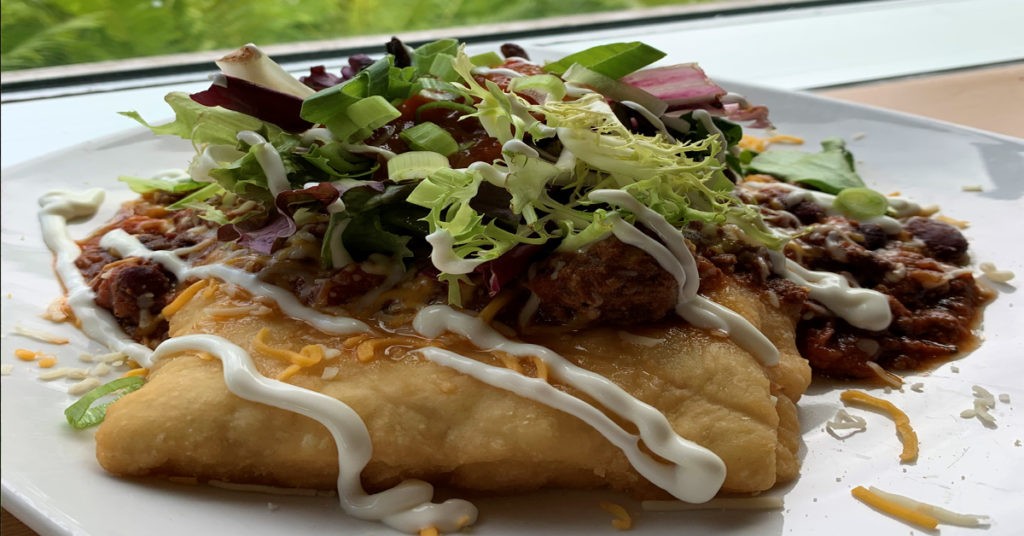
After your guided (or self-guided) tour, the Thunderbird Café is a perfect place to try traditional ingredients with a unique twist (insider’s tip: the café is accessible to all, without having to purchase admission). Whether you decide on the Cedar Plank Sockeye Salmon, the Venison Chili or the Bannock Taco (which is what I had, and I have to admit was the best taco I’ve ever tasted!) you will not be disappointed – so definitely come hungry!!!
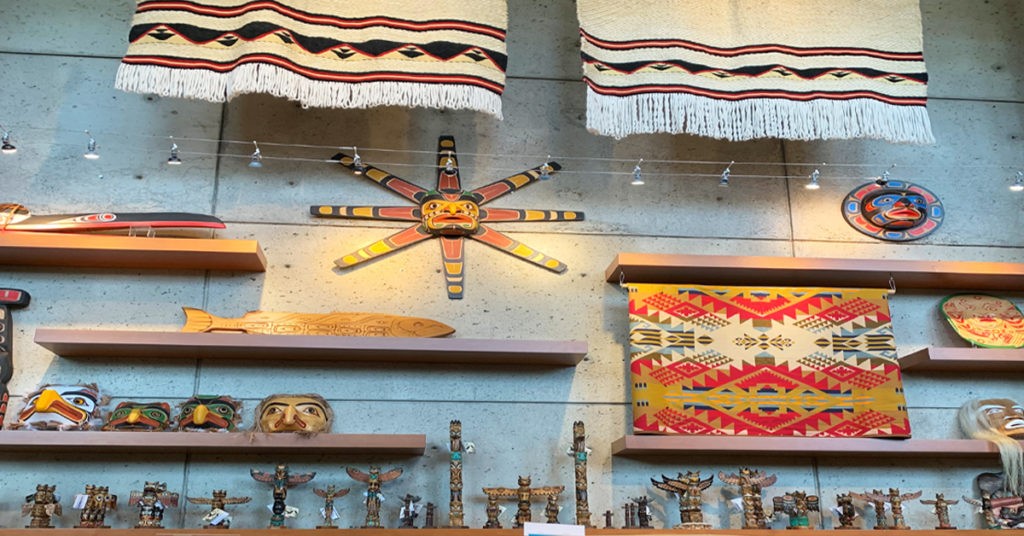
Lastly, when visiting the SLCC, make sure you check out their beautiful Gift Shop, as there are some really lovely and unique souvenirs. They specialize in authentic and exclusive handcrafted Pacific Northwest First Nations merchandise to perfectly commemorate your visit to the centre. I may have bought just a ‘few’ items for myself, but at least I resisted purchasing a totem pole – because yep, they even sell totem poles!
A huge thank you – HUY CHEXW / KUKW’STUMC’KALAP – to the Squamish Lil’wat Cultural Centre for hosting me. I loved my visit and certainly came away with a whole new appreciation and knowledge. I wholeheartedly recommend a visit to the Squamish Lil’wat Cultural Centre to anyone when visiting Whistler.


Bruce
Posted at 17:50h, 25 JuneSuch a great read, covering many topics. Makes me want to go back to Canada and re-live my adventures armed with this new knowledge of the area.
The Charmed Normad should signed up as a local travel guide for TV.